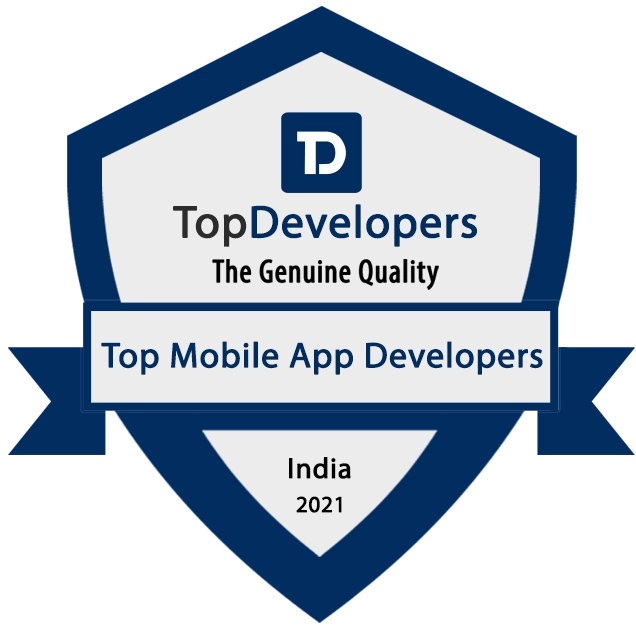Introduction
Artificial intelligence has been transforming businesses for years, and one of the most significant areas of impact has been in customer interaction through chatbots. Chatbots have evolved from simple rule-based systems to sophisticated AI-driven solutions capable of handling complex tasks and offering human-like conversational experiences. At the core of this evolution lies the use of Large Language Models (LLMs), enabling businesses to build LLM-powered chatbots that can understand, interpret, and respond to queries in a natural, intuitive manner.
Creating an advanced LLM-powered chatbot can revolutionize customer service, automate workflows, and scale personalized interactions. But how exactly can businesses develop such a powerful chatbot solution? This guide will walk you through the key steps, components, and considerations to create a cutting-edge LLM-powered chatbot for your business.
What are LLM-powered Chatbots?
LLM-powered chatbots are conversational agents that leverage Large Language Models, such as GPT (Generative Pre-trained Transformer), to generate human-like text responses. Unlike traditional chatbots, which rely on predefined rules or scripts to respond to users, LLM-powered chatbots use advanced AI models trained on vast datasets to understand context, generate responses dynamically, and learn from interactions over time.
These models are based on deep learning architectures, typically transformers, and can be fine-tuned for specific use cases like customer support, virtual assistants, or e-commerce recommendations. With the ability to handle a wide range of tasks, from answering FAQs to performing natural language processing (NLP) tasks, LLM-powered chatbots are becoming an indispensable tool for businesses aiming to enhance user experiences.
Key Benefits of LLM-powered Chatbots
Before diving into the creation process, it’s essential to understand why LLM-powered chatbots are rapidly gaining popularity:
Natural Language Understanding (NLU):
LLM-powered chatbots have superior language comprehension, making them capable of understanding a broader spectrum of user intents and languages.
Human-like Conversations:
The chatbots can engage users in more natural and fluid conversations, enhancing the overall user experience.
Scalability:
LLM-powered chatbots can handle thousands of conversations simultaneously, making them ideal for scaling customer service operations.
Continuous Learning:
These chatbots can learn and improve over time, providing more accurate responses as they gain access to more interaction data.
Multilingual Capabilities:
They can support multiple languages without requiring separate models for each language, making them highly versatile for global businesses.
Task Automation:
Beyond just answering queries, LLM-powered chatbots can be integrated into business processes to automate workflows, reducing operational costs and improving efficiency.
Now that we have a clear understanding of the potential benefits, let’s move on to the steps required to create an advanced LLM-powered chatbot.
Build Your LLM-Powered Chatbot Now!
Schedule a CallStep-by-Step Guide to Creating an Advanced LLM-powered Chatbot
Step 1. Define the Use Case
The first and most important step in building an LLM-powered chatbot is to clearly define its purpose. The specific use case will drive the rest of the development process. Ask yourself:
- What tasks should the chatbot perform? (e.g., customer support, lead generation, e-commerce assistance)
- What type of interactions will users have with the chatbot? (e.g., transactional, conversational, informative)
- What platforms will the chatbot be deployed on? (e.g., website, mobile app, messaging platforms like Telegram or WhatsApp)
Common use cases for LLM-powered chatbots include:
- Customer Service Chatbots: Automating customer support queries, reducing the load on human agents.
- E-commerce Assistants: Helping users find products, answer questions, and complete transactions.
- Virtual Personal Assistants: Assisting users with scheduling, reminders, and everyday tasks.
- Lead Generation Bots: Engaging with website visitors and qualifying leads for sales teams.
Once the use case is defined, you can move forward with development.
Step 2. Choose the Right LLM for Your Chatbot
Choosing the appropriate Large Language Model is crucial for building a high-performing chatbot. Popular models like OpenAI’s GPT series, Google’s BERT, or custom LLMs fine-tuned for specific industries can be used depending on your needs.
Key considerations when choosing an LLM:
- Model Size: Larger models like GPT-3 and GPT-4 can handle more complex queries and generate better-quality responses but require more computational resources.
- Fine-tuning Capabilities: Some models can be fine-tuned on domain-specific datasets to cater to your business needs.
- API vs. Custom Model: Decide whether you want to use a pre-trained model via an API (like OpenAI’s GPT-4 API) or build a custom LLM. API-based models are easier to integrate but may limit control, while custom models allow for greater customization at the cost of increased development complexity.
Step 3. Prepare and Preprocess Your Data
Data is the backbone of any LLM-powered chatbot. To ensure your chatbot provides accurate and relevant responses, you must prepare and preprocess high-quality datasets. This step includes:
- Collecting Data: Gather data from various sources such as customer queries, product information, FAQs, manuals, or previous chatbot logs.
- Cleaning and Normalizing Data: Remove inconsistencies, duplicates, and irrelevant data from your dataset. Clean data ensures that the LLM learns from high-quality information, which improves its accuracy.
- Fine-tuning for Specific Tasks: If your use case requires specialized knowledge (e.g., legal, medical, or financial queries), you can fine-tune the LLM on domain-specific datasets to improve performance.
By fine-tuning a pre-trained LLM with your data, you can create a chatbot that aligns with your business objectives and offers accurate, relevant responses.
Step 4. Design the Conversation Flow
LLM-powered chatbots may handle conversations more fluidly than rule-based systems, but it’s still essential to design a conversation flow that guides users to the right information or action. Creating a structured flow ensures that the chatbot responds logically to user queries, manages the dialogue efficiently, and achieves the desired outcome.
Consider implementing:
- User Intent Detection: Use NLP to identify user intents accurately and direct the conversation appropriately.
- Fallback Mechanisms: Plan for scenarios where the chatbot fails to understand a query by creating fallback responses that guide users to rephrase or offer alternatives like contacting a human agent.
- Multi-turn Conversations: Enable the chatbot to handle multi-turn dialogues, where it remembers the context and responds to follow-up queries naturally.
Tools like conversational AI platforms (Dialogflow, Rasa, or Botpress) can help structure conversation flows while integrating your LLM model for response generation.
Launch Your AI Advanced LLM Chatbot Today
Schedule a CallStep 5. Build the Chatbot Architecture
Once you’ve laid out the conversation flow, it’s time to build the architecture that will support your chatbot. This involves multiple layers, including:
- Frontend User Interface: Whether it’s a web widget, mobile app interface, or integration with messaging platforms like Slack or WhatsApp, your chatbot needs an intuitive and user-friendly interface.
- Backend for Logic and Integration: The backend handles the logic, processes user inputs, and routes the requests to the LLM. It also integrates with external databases, APIs, or business applications to retrieve relevant information.
- LLM Integration: Integrate the chosen LLM into the chatbot’s backend through an API or your custom model. Ensure that your backend is optimized to manage the computational load of LLM-powered queries.
- Data Storage: Create a mechanism to store user interactions, preferences, and chatbot logs for future improvements, retraining, or compliance requirements.
A solid chatbot architecture ensures scalability, reliability, and security for real-world use.
Step 6. Implement Continuous Monitoring and Improvement
Once deployed, it’s essential to continuously monitor the chatbot’s performance to ensure it meets business objectives and user expectations. Key metrics to track include:
- Response Accuracy: How often the chatbot responds correctly to user queries.
- Latency: The time taken by the chatbot to respond to a query, as LLMs can be resource-intensive.
- User Engagement: Track how users interact with the chatbot, including session length, query types, and completion rates.
Regularly retrain the chatbot on new data and user interactions to improve its accuracy and adaptability. Implement feedback loops that allow users to rate responses or provide feedback, which can be used to refine the chatbot over time.
Advanced Features to Include in LLM-powered Chatbots
To create an advanced LLM-powered chatbot, businesses can integrate additional features that enhance functionality and user experience. Here are some advanced capabilities you can implement:
Sentiment Analysis:
Incorporate sentiment analysis to detect the emotional tone behind user queries. The chatbot can then adjust its responses based on the user’s mood, improving engagement and satisfaction.
Context Retention:
Enable the chatbot to retain context across multiple conversations. This can help in more personalized interactions where the chatbot remembers user preferences, past interactions, or specific details.
Multilingual Support:
Advanced LLM-powered chatbots can easily support multiple languages. By integrating translation services or training the LLM on multilingual datasets, your chatbot can cater to a global audience.
Task Automation:
Beyond conversation, LLM-powered chatbots can be connected to other business applications to automate tasks like booking appointments, processing orders, or retrieving information from databases.
Voice Interface Integration:
As voice assistants become more common, integrating voice interfaces with LLM-powered chatbots can enhance the user experience by allowing users to interact via voice commands.
Deployment and Scaling
Once the chatbot is ready, the next step is to deploy it on the appropriate platforms. Depending on the use case, you might deploy it on:
Web and Mobile Applications: Integrate the chatbot into your website or mobile app for direct customer engagement.
Messaging Platforms: Platforms like Slack, WhatsApp, Telegram, or Facebook Messenger are ideal for reaching users where they spend most of their time.
Voice Assistants: Integrate the chatbot with voice assistants like Alexa or Google Assistant to provide conversational interfaces.
To ensure smooth operation as the user base grows, it’s crucial to implement robust scaling strategies. Using cloud-based platforms like AWS or Azure can help manage the increased computational load as more users interact with the chatbot.
Security and Compliance Considerations
When deploying LLM-powered chatbots, businesses must ensure that user data is secure and that the chatbot complies with relevant regulations. Key considerations include:
Data Privacy: Ensure that user data is encrypted, and the chatbot complies with privacy regulations like GDPR or CCPA.
Secure API Integrations: When connecting the chatbot to external systems, ensure that API communications are encrypted and secure.
Bias Detection: Regularly audit the chatbot’s responses to identify any unintended bias in its language generation, and take corrective actions to mitigate such bias.
Conclusion
Creating an advanced LLM-powered chatbot can significantly enhance your business operations by improving customer engagement, automating tasks, and delivering high-quality interactions at scale. By leveraging the power of Large Language Models, businesses can develop chatbots that offer natural, context-aware conversations, handle complex queries, and continuously improve over time. Following the steps outlined in this guide, you can build a chatbot that meets your specific business needs while delivering a cutting-edge user experience.
LLM-powered chatbots represent the future of conversational AI, offering unprecedented capabilities to businesses across industries. Whether you're in customer service, e-commerce, healthcare, or any other sector, now is the time to explore how LLM-powered chatbots can transform your operations.









